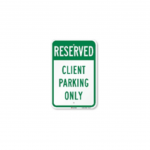I am lucky enough to be passionate about my job: help leaders to transform their large organization towards more performance and harmony. In today’s world, this is systematically translated by more workers’ participation and more self-management/governance. This article is one of a series on this topic, where I try to make sense of my experience and insights.
Two of the simpler complementary approaches to the complex transformation towards self-governance are to take it top-down or bottom-up. For this second thought-letter on the topic, I will focus on one dimension of culture change -symbols- which can stimulate the bottom-up approach. I believe symbols are worth looking at because they have immense potential to help organizational transformation – let’s say they have a high “return on investment” (ROI) – including towards self-governance (and conversely, can also be a tremendous barrier).
The bottom-up approach means that employees will invest energy to create their own change and push it higher up in the organization and its infrastructure. There are multiple and complementary ways to stimulate this dynamic. I believe that acting on corporate culture is one of the most effective and long lasting approaches, but also very demanding.
In general terms, culture shapes the identity of an organization and I like to see it as a living tree, with on the one hand the invisible roots and on the other hand the visible trunk, branches and leaves.
Visible parts, including leaves in need of light
The artefacts of an organizational culture:
- People’s behaviours (e.g. greeting in the lift and decision making in meetings)
- Symbols attached to the organization
- Structural business processes and systems (e.g. performance evaluation and power of signature for contracts)
- Infrastructure (e.g. office location and layout)
Invisible roots in need of nutriments and water
Values and beliefs (collectively and individually for employees and managers)
An effective culture should serve the business purpose, vision and strategy, as well as demonstrate a strong alignment between visible and invisible, individual and collective dimensions. This alignment becomes even more critical with self-governance because the more profound it is, the stronger is the culture. A strong culture will favour the coherence of individual behaviour and sense of direction, which are critical when the empowered staff do not rely only on the bosses’ “command & control” to define its actions.
In this thought-letter, I would like to focus on symbols, which I see as the most efficient lever to influence a culture and the alignment mentioned above. In my experience, I have seen symbols act as a very powerful lever towards self-governance, but sadly enough, can also be a destructive force. In other words, symbols can bring or destroy value in the move towards intended organizational and cultural transformation.

llustration of the power of symbols: Most companies rely on client centricity and often opt to translate this into their values with expressions such as “passion for our clients” or “clients first”. In order to become effective, these stated values need to be translated into the reality. For example, the design of a parking lot or the reception lobby can effectively support this value and drive specific behaviours both for employees and visitors: when a customer has access to a reserved parking space for their car next to the entrance and finds one of their products exhibited in the lobby, they will feel valued. In this case, the company “walks the talk”. But the experience and therefore the response could be very different if they found a parking space further away, with the “privileged” spaces reserved for the management and a picture of the company management team or facilities in the lobby. This is the power of symbols: they support or contradict your aspirational values (=> intended culture) and in fine your business strategy.
When changing from typical hierarchy towards self-governance, this power of symbols is applicable to some specific topics and can foster certain behaviours.
Below, Below, you find icons / symbols for both types of organization and culture (limited to two selected concepts).

In order to activate the power of symbols, you can observe which visual symbols are used in your organization and if needed, change them. Here are a few examples of how some companies apply symbolic actions to foster self-management:
- Meetings happen in a circle (with or without a table) with distributed right to speak trough a talking piece (the symbol of the right to speak) and a split of roles between facilitator and chair (distributed power).
- Factory workers have a personal limited yearly budget to buy tools of their choice (no control, but some constraints) in order to improve their direct working environment.
- Within teams, important choices are made together, whether through consultation or though co-decision (mostly by consent). For example, performance evaluation and recruitment happen by the team and not just by the manager.
- Teams dedicate regular time to foster trust and happiness through playful activities to discover each other’s special talents.
- Application of new ways of working (NWOW), including free seating, home working and flexible schedule (without clocking-in) for top executives, managers and employees (rules apply to all).
- Anyone may submit a business opportunity and plan to the investment committee and, if approved, can set up the new venture.
Note: I do not mention the symbolic value of the leaders’ behaviour, because it was already covered in my previous thought-letters. Nevertheless, leaders are highly regarded, and what their decisions incarnate can have a significant impact on the culture change or stagnation. Take for example the decision to promote someone: employees will consciously or not check the congruence of the aspirational values/culture with the person’s behaviour. Should it match, then it is a significant encouragement to pursue the movement. If not, the paradox could become a source of perceived injustice and generate resistance.
As a conclusion, supporting some strong symbolic expressions of self-governance and avoiding those of “command and control” are among the strongest levers to foster the cultural and organizational movement in this direction. Symbols are a powerful engine of change towards any kind of organizational expression, whether self-management or other.
Fell free to send me your feedback and reflexions, as well as your request for topic in a following thought-letter.
Download PDF





